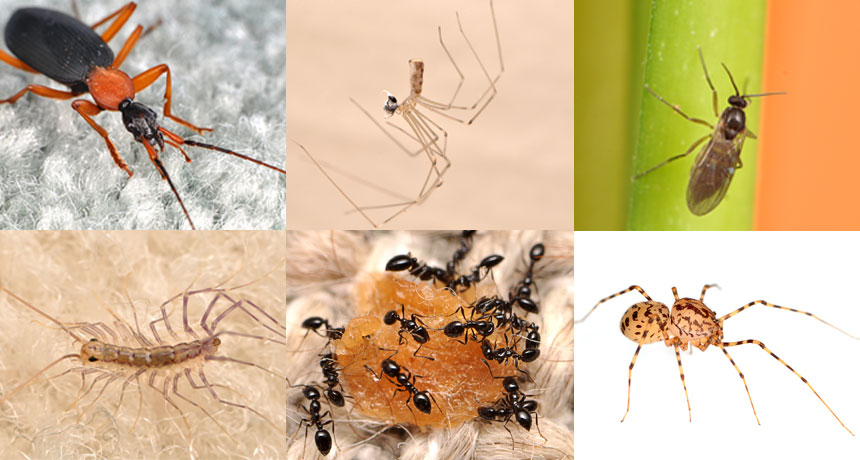Diversity of indoor insects, spiders adds to life’s luxuries in high-income neighborhoods

Here’s something new for real estate agents to boast about in posh neighborhoods: houses with a bigger variety of insects and spiders.
Maybe that’s not the best selling point. But what’s called a “luxury effect” appeared among more than 10,000 arthropod samples collected from the insides of 50 houses in urban and suburban Raleigh, N.C. Depending on the house, arthropods from 24 to 128 distinct scientific families showed up, says entomologist Misha Leong of the California Academy of Sciences in San Francisco. Houses on city blocks with higher average incomes tended toward greater diversity and houses on low-income blocks often had less, she and her colleagues report August 3 in Biology Letters. An average home had more than 100 arthropod species.
Other researchers have linked wealth with greater diversity of a home’s (outdoor) birds, lizards, bats and plants. As far as Leong knows, however, this is the first evidence of arthropod variety as a perk of wealth.
Researchers didn’t try to measure the abundance of arthropods but looked at the diversity. Many of the arthropod roommates found in the great indoors are so harmless that homeowners had never heard of them. Gall midge flies showed up in 100 percent of houses studied, and dark-winged fungus gnats lived in 96 percent. Both were more common than Blattidae cockroaches (in 74 percent of homes).
Sheer size of bigger houses, perhaps with more room for habitat, was an important factor in the arthropod variety in wealthier neighborhoods, the researchers found. And even though the survey took place indoors, the amount of outdoor planting likewise proved important. Leong speculates that planting more variety in yards and gardens may increase arthropod diversity just by boosting the kinds of foods and habitats available outdoors — which could mean more kinds of arthropods venturing indoors.
Such results might show up in other cities if planting tastes are similar, muses Ann Kinzig of Arizona State University in Tempe. She was not part of the arthropod project but has written on landscaping and householder socioeconomic status. A luxury effect like Raleigh’s might turn up in neighborhoods where rich homeowners want both a variety of different plants around a house and a consistent neighborhood look that creates big blocks of the varied greenery, she says. “But that wouldn’t always have to be the preference of the rich.”
Leong hopes her message of creepy-crawly cohabitation will fight the fear of arthropods. A wide variety of arthropods have been sharing homes with people for years, she points out, “and you’ve been just fine.”



